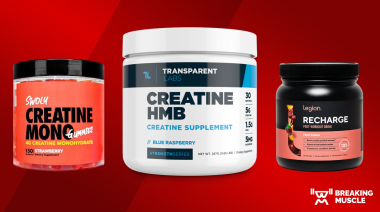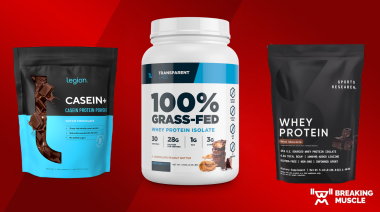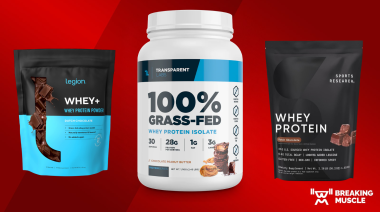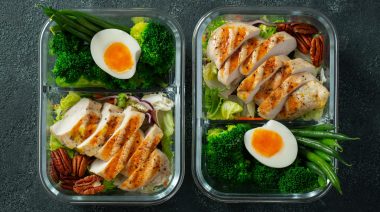Long story short – IIFYM is not worth the risk. All dietary theories have strengths and weaknesses, as well as a certain place for certain people. But when it comes to function and physique, I’m not convinced the pros of flexible dieting outweigh the cons.
Disclaimer: I’m not saying you shouldn’t do IIFYM. I’m saying that for me a traditional “clean” diet prevails for a number of reasons, despite the pull of a more flexible approach – and no, I’m not asking for your opinion.
That’s me.
What Is IIFYM?
The theory is that your focus need not be on food type, but on macronutrients. That is, the amounts of protein, carbs, and fats consumed, regardless of the source they come from, are what will determine your diet.
Generally an individual chooses (or is given) a set of macros that is believed will work for him or her and works to meet these numbers throughout the day by eating certain amounts of protein, carbs, and fats.
Food Quality and Micronutrients
We know it’s possible to get adequate micronutrients through IIFYM, but eating whole foods the majority of the time makes it easier for me to get my necessary micronutrients without having to pay much attention to detail.
“I wouldn’t risk a flexible diet if it meant also risking the achievement of my goals. All decisions I make are based on food as fuel, period.”
By keeping a diet of whole foods and including unprocessed proteins, complex carbohydrates, healthy fats, and an abundance of fruits and vegetables, it’s almost impossible for me to not get the adequate intake of the micronutrients my body needs. By eating this way, things like fiber, vitamins, and minerals aren’t something I have to focus on specifically as I naturally get enough. As a bonus, I don’t have to deal with counting, measuring micronutrients, or supplementing.
I’m also giving my body the best chance to receive food void of additives and preservatives. This isn’t to say that processed foods are to be feared (in moderation), but in a sport where I’m demanding the most of my body every day and expecting it to perform at the highest level, there’s no need to throw added chemicals into the mix daily or even weekly. You don’t put regular fuel into a sports car. When it comes to diet, every decision I make is based on function above all else, even taste.
Meal Timing
A huge caveat of IIFYM for all athletes is the lack of structure in meal and macronutrient timing. For an elite athlete, the ability to fuel the body properly and consistently throughout the day, as well as provide the most effective form of fuel for recovery is crucial for success and longevity. Maximizing performance through nutrition, not only in terms of strength, but also in regards to speed, power, and endurance is key.

As a coach and athlete, I’m specific in both what and when my clients and I eat. Everything is planned strategically to fuel effective workouts, efficient recovery, and the best performance:
- It’s no news that protein and carbohydrates are the perfect pre-workout combination to increase performance, hypertrophy, and recovery, and that post-workout a simple carbohydrate source aids in greater protein synthesis through increased insulin and better recovery.
- I avoid fats both peri-workout as they slow gastric emptying time, delaying digestion and the ability for my body to have the immediate energy source needed pre-workout and immediate replenishment of glycogen post-workout.
In following the guidelines of IIFYM, there would be no official “ruling” on what macronutrient combination to consume before and after a workout. Depending on the choices made, this could hinder performance and recovery, robbing athletes of best results.5
Blood Glucose, Energy Levels, and Macronutrient Combining
The effect of the consumption of specific macronutrients (and macronutrient combinations, especially in regards to carbohydrates) at different points throughout the day needs to be considered. Just like fats slow the digestion of the carbohydrate or protein source, they also lower the spike in blood glucose, which can be a positive or negative, depending on the timing and function of the meal.1
“By saving certain macronutrients for the end of the day, an individual may be hindering performance, recovery, and metabolism, as well as increasing the likelihood of storing fat.”
It is known that a simple carb source with less fiber produces a greater spike in blood glucose, as opposed to a more complex carb source (likely higher in fiber), which slows digestion. Since the effects on blood glucose and energy levels are different depending on the choice of carbohydrate source, there is some functional benefit to consuming the different types of carbs at different times. I use this knowledge to avoid energy spikes and plateaus, as well as to provide the most efficient energy source prior to physical activity.1
This is not to mention the added metabolic benefit of consuming carb sources with higher fiber content, as the body is forced to expend more energy to break down such sources and benefits from the greater thermic effect. This is to say, that in my opinion, not all carbohydrates (or calories) are created equally.
And lastly, although potentially insignificant to some, it has been shown that although fat is able to be stored as fat without insulin, in the presence of insulin, fat storage is amplified. This can be a valuable variable to adjust in attempting to achieve extremely low levels of body fat for competitive physique athletes and it’s why I don’t eat fats and carbs together.2
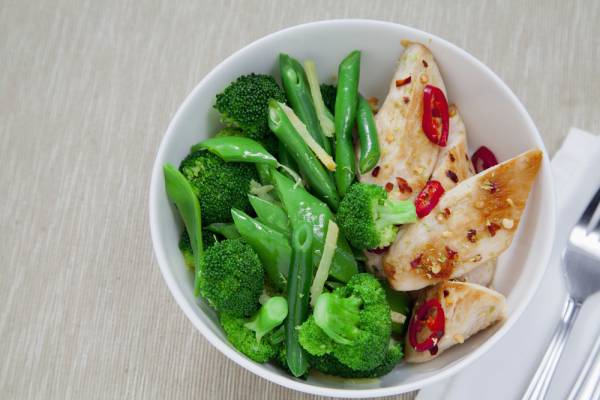
Meal Frequency and Caloric Absorption
A common trend I see in IIFYM dieters is the habit of “saving” calories in order to enjoy something later in the day (#carbsafterdark) to tame cravings and allow some indulgence. I’m all about enjoying food, but there are more important things to focus your division of calories and macronutrients on – specifically, performance.
By saving certain macronutrients for the end of the day, an individual may be hindering performance, recovery, and metabolism, as well as increasing the likelihood of storing fat. The body can only process so much of each macronutrient in one sitting before storing the excess.4
In relation to blood glucose levels, more frequent meals sustain levels throughout the day for a more balanced energy expenditure, mood, and mental state. This provides a more stable and efficient metabolism due to the thermic effect of food and elevated hormones in response to eating. By consuming more meals in a day, it’s likely the individual is eating less calorie-dense foods, such as lean proteins and complex carbohydrates, which have a greater thermic effect and further increase overall energy expenditure.3
Psychological
I know many athletes who have found solace in IIFYM after struggling with disordered eating and binge eating. But although a more flexible approach may be the solution to the symptom of bingeing, it is not necessarily the solution to the real problem – the need for control of food intake to an obsessive level.
“Will power really is like a muscle, but it’s also a science. When you stop eating high-sugar, high-fat foods, you eventually stop craving them.”
IIFYM can be performed in a healthy manner, but it can be easy to become obsessive when counting macronutrients, often to the point of social and emotional distress. This is not to say that similar effects cannot be experienced through a clean diet, but in my experience a structured diet plan negates the necessity for individuals to be hyper-focused on tracking intake throughout the day as the food sources and quantities are already provided, avoiding the likelihood of compulsion.

Self-Control
This might seem extreme, but for me the deciding factor in avoiding a flexible diet is the level of self-control I deem necessary to achieve the physique I want. By avoiding processed foods and added sugars for the majority of three years, I have developed a greater will power and control over my cravings.
“As a figure competitor, by focusing only on macronutrients, I would be doing myself a disservice and negating a wheelhouse of variables such as food sources, meal timing, macronutrient combining, and the most effective pre- and post-workout nutrition to progress my physique.”
Will power really is like a muscle, but it’s also a science. When you stop eating high-sugar, high-fat foods, you eventually stop craving them. The natural flavors in food become more prominent, making it easier to “diet.” By being “flexible” and including a processed or sugar-laden food item once a day, or even once every couple of weeks, it is more difficult to enjoy and adjust to the “bro meals” and you may experience the craving for more.
Final Thoughts
For some, the variables being manipulated with an IIFYM approach are not enough to achieve their goals functionally and aesthetically. As a figure competitor, by focusing only on macronutrients, I would be doing myself a disservice and negating a wheelhouse of variables such as food sources, meal timing, macronutrient combining, and the most effective pre- and post-workout nutrition to progress my physique.
For these reasons, I stick to a structured meal plan of whole foods to ensure I’m doing everything in my power to achieve the best physique possible. I wouldn’t risk a flexible diet if it meant also risking the achievement of my goals. All decisions I make are based on food as fuel, period.
You’ll Also Enjoy:
- Why What You Think About Flexible Dieting (IIFYM) Is Wrong
- Do You Even Low Carb? A Beginner’s Guide to Keto
- Eat What You Want: Your Macros and the Truth About Carbs
- What’s New on Breaking Muscle Today
References:
1. Anderson, J., Young, L. and Prior, S. Nutrition for the Athlete. Colorado State University. Accessed March 16th 2015.
2. Ivy, J., and Portman, R. Nutrient Timing: The Future of Sports Nutrition. North Bergen: Basic Health Publications, 2004.
3. La Bounty, P., et al. International Society of Sports Nutrition position stand: meal frequency. Journal of the International Society of Sports Nutrition. 2011,8 (4): 1-12.
4. Smeets, A., Margriet., S., and Westerterp-Plantenga. Acute effects on metabolism and appetite profile of one meal difference in the lower range of meal frequency. British Journal of Nutrition. 2008, 99: 1316-1321. doi:017/S0007114507877646.
5. Stark, M., Lukaszuk, J., Prawitz, A., and Salacinski, A. Protein timing and its effects on muscularhypertrophy and strength in individuals engaged in weight-training. Journal of the International Society of Sports Nutrition. 2012,9 (54): 1-8.
Photos 2, 3, and 4 courtesy of Shutterstock.

